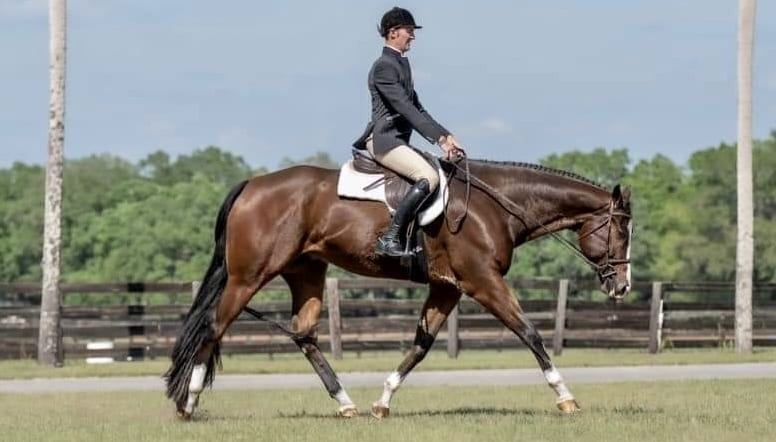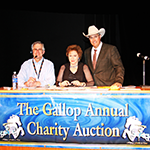We have all watched that hunter under saddle class that sends chills down your arm. As you watch those elegant animals move around the ring with such effortless movements, you might have asked yourself, “How can such large creatures move so freely?”
Sometimes it does not even look as if they are touching the ground; their whole body has the appearance of floating on a cloud. It’s an incredible sight.
GoHorseShow spoke with Julian Harris of Julian Harris Show Horses International about getting that beautiful look for a hunter under saddle class. With a specialty in hunt seat with his husband Matthew Harris, Julian explains his practice tips and general show advice to score you some points in the ring.
“Whether it’s an open show or a world show…one of the biggest things you can do is expose your horse to all kinds of things,” says Julian. So, get out there and show after reading some of these top-tier tips on improving your horse’s overall stride.
Head Carriage
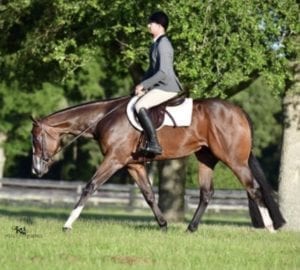 Judges want to see a long, level head carriage for the hunter under saddle. One of Harris’ top suggestions is to stretch your horse. “The horse has to be able to use its body and be soft and supple and fluid through its entire structure. For it to be soft, the horse’s neck must be independent of the rest of its body. The highest point needs to be the horse’s withers,” explains Julian. If you have your horse engaged and balanced, then its neck will fall into place. So, as Julian said, “do your homework.” Make sure you have had enough practice time before the show to get your horse limbered up where they can level their head out.
Judges want to see a long, level head carriage for the hunter under saddle. One of Harris’ top suggestions is to stretch your horse. “The horse has to be able to use its body and be soft and supple and fluid through its entire structure. For it to be soft, the horse’s neck must be independent of the rest of its body. The highest point needs to be the horse’s withers,” explains Julian. If you have your horse engaged and balanced, then its neck will fall into place. So, as Julian said, “do your homework.” Make sure you have had enough practice time before the show to get your horse limbered up where they can level their head out.
Consistency
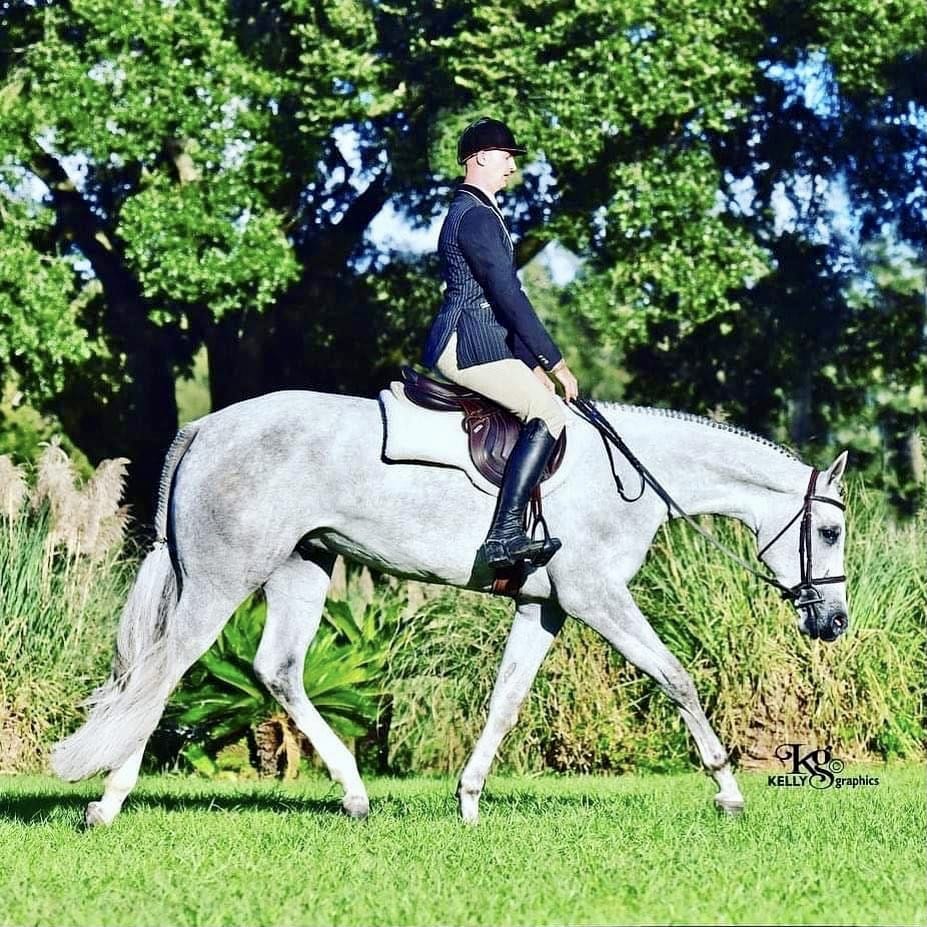 This one is a deal-breaker. You can have that freakishly long-legged horse that could easily win the class with its stride, but if the speed of that horse changes throughout the class, the “middle of the road,” consistent mover, is more likely to place ahead.
This one is a deal-breaker. You can have that freakishly long-legged horse that could easily win the class with its stride, but if the speed of that horse changes throughout the class, the “middle of the road,” consistent mover, is more likely to place ahead.
Harris says he still has to practice being consistent religiously. He likes to work on his confidence, which helps him be uniform with his horse. “A lot of us tend to ride in the warm-up different from which we show,” said Harris. “Your ride in the warm-up is aggressive and assertive, and then you get to the show pen, and you become ineffective. Find a way to make yourself look pretty on a horse, but continue to ride effectively.”
One of the most important things about getting a consistent ride is to have an excellent mental standpoint with yourself and your horse as a team.
Lengthening the Stride
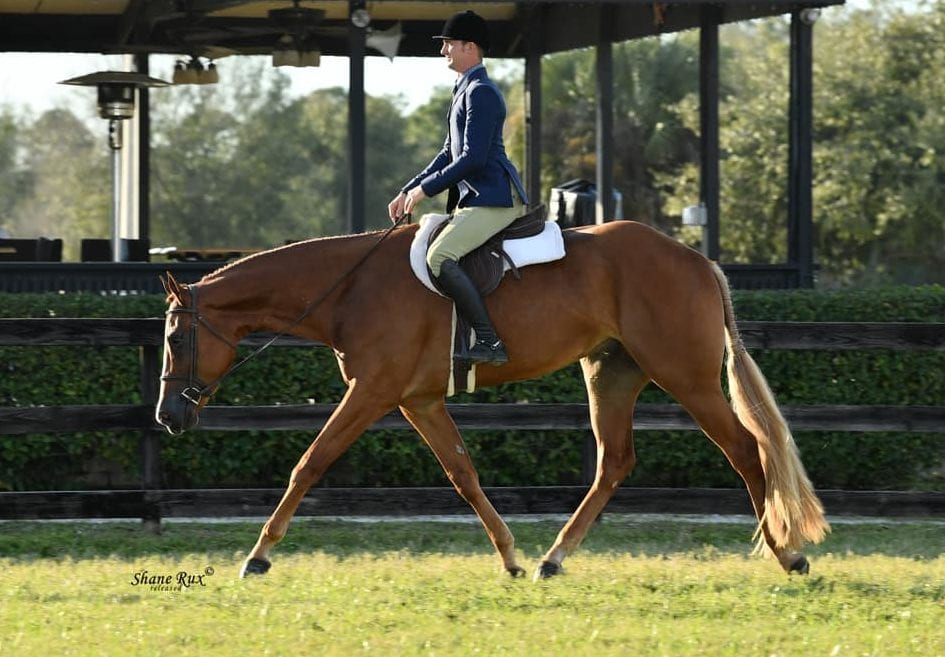 Some of Julian’s go-to practice techniques to lengthen his horse’s stride are to do a sitting trot and work in fundamental dressage movements. The rider can affect a horse’s stride tremendously. Of course, a horse’s natural ability plays a role in how it performs in a hunter under class, but a rider can optimize their horse’s ability to stride out.
Some of Julian’s go-to practice techniques to lengthen his horse’s stride are to do a sitting trot and work in fundamental dressage movements. The rider can affect a horse’s stride tremendously. Of course, a horse’s natural ability plays a role in how it performs in a hunter under class, but a rider can optimize their horse’s ability to stride out.
“Pace and length of stride are not the same things; going fast does not mean you have a bigger step. You know you shouldn’t post faster than your horse allows; you shouldn’t jump up out of the saddle and post tight and high and strong. With horses that are very, very slow legged, when you post big, their trot actually kind of goes away,” stated Julian.
Overall, go with the rhythm of your horse and practice lengthening their stride with simple, often overlooked exercises.
Body Position
No matter how good your horse might be, the rider can throw everything off. Balance, pressure, confidence, rhythm, strength, etc. all play a part in a horse’s performance. If a rider is off-balance, then the horse is going to be off-balance. One thing to pay attention to while you are riding is, “To know where your center of gravity is and where the center of the horse is,” explained Julian. “Sometimes when I show, I’ll lean to the outside and have my horse follow my weight.”
This allows Harris to steer without using so much hand movement. However, if not done correctly, it can be an unbalanced scenario. Because of this, it is essential to practice all of the fundamentals of good equitation at home. Without the proper body position, you can hinder a horse’s quality of movement, consistency, and even manners in a class.


